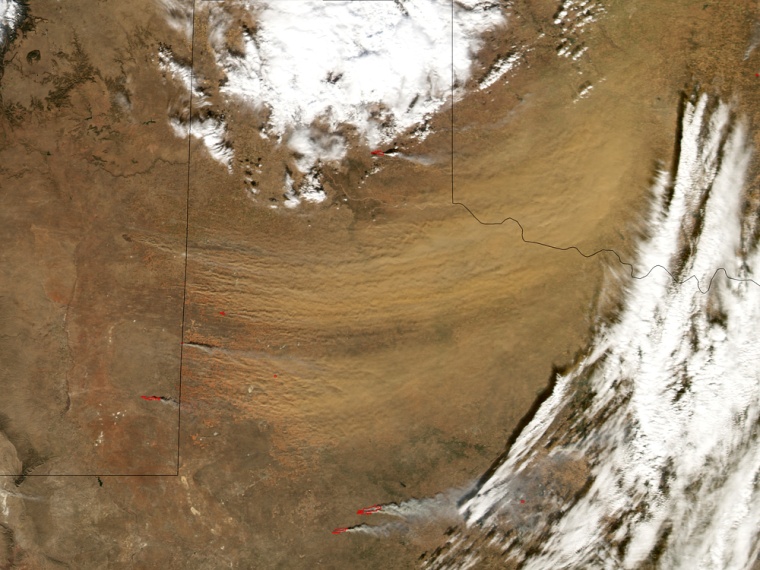Residents of the Southern Plains, already enduring parched conditions that fuel fires and dry up grazing land, on Friday were digesting some potentially bad news: A La Niña, the mild cooling of the tropical Pacific Ocean that can affect weather in other areas, is being forecast for spring and that could mean continued drought.
The La Niña has been forming but is not to blame for recent weather patterns, forecasters with the National Oceanic and Atmospheric Administration emphasized in their report Thursday.
La Niñas tend to encourage wet weather in the Pacific Northwest and dry conditions in the south. But because the La Niña is only just starting to develop and is expected to be weak, forecasters said it is too early to say how it will affect spring and summer weather.
No grass, lots of fires
But the potential for continued dry weather is not welcome news to ranchers like Texan Pete Bonds, who would like to add cattle to his 7,000-head herd but the lack of grazing and the lack of water prevent it.
“We just don’t have the grass to expand,” said Bonds.
The drought in Texas and Oklahoma, one of the worst in nearly 100 years, has dried up creeks and ponds, depleted pastures, and fueled wildfires that have burned precious hay and grass.
“Any rancher or landowner out there is still losing a lot of sleep worrying about looking out the window and seeing his or his neighbor’s place on fire,” said Matt Brockman, executive vice president at the Texas Southwestern Cattle Raisers Association.
The drought, combined with winds, even kicked up a mean dust storm on Jan. 1 — one that was 300 miles wide as it swept through northern Texas and into Oklahoma.
Many storms needed
Forecaster Mike Palmerino at Meteorlogix said long-term weather models indicate rain- or snow-bearing storms could move into the drought-affected region late next week.
“There are hints that this could be the beginning of a change in pattern toward wetter conditions in the southern Plains,” said Palmerino.
Ranchers said it will take several storms before the pastures recover.
“A one-time, four-inch rain will not even come close to getting us out of the quandary we are in,” said Brockman. “It will take numerous storms.”
The area near Lubbock, Texas, has gone 77 days without measurable precipitation. The longest dry spell was 85 days, which ended in January 1922.
